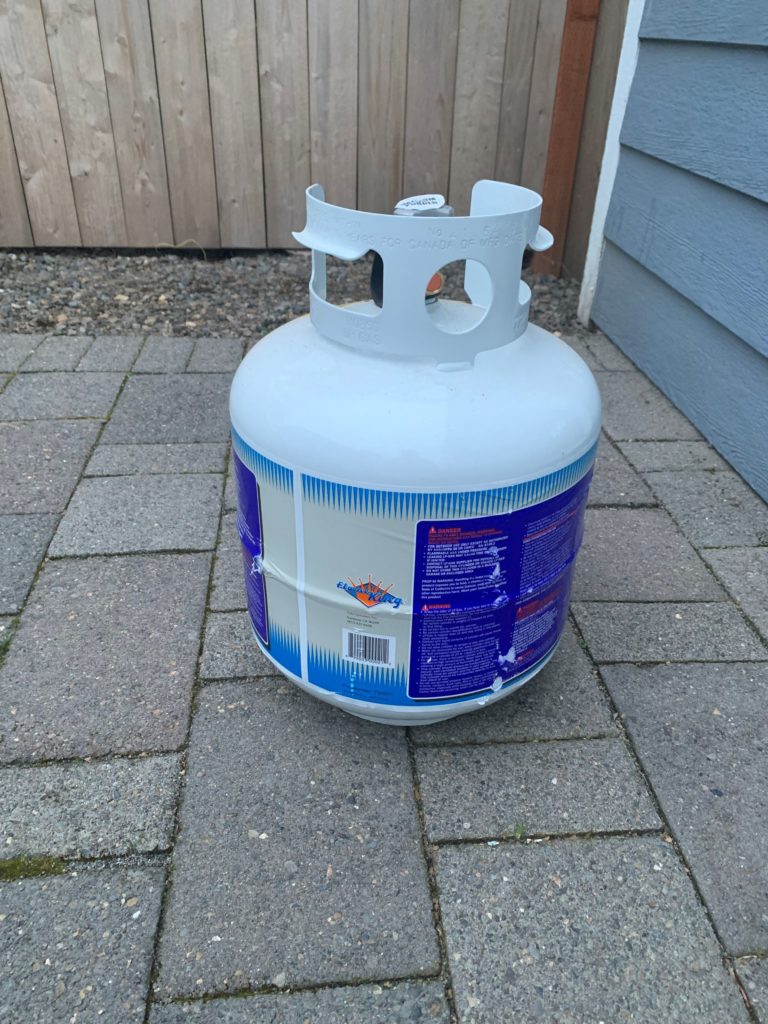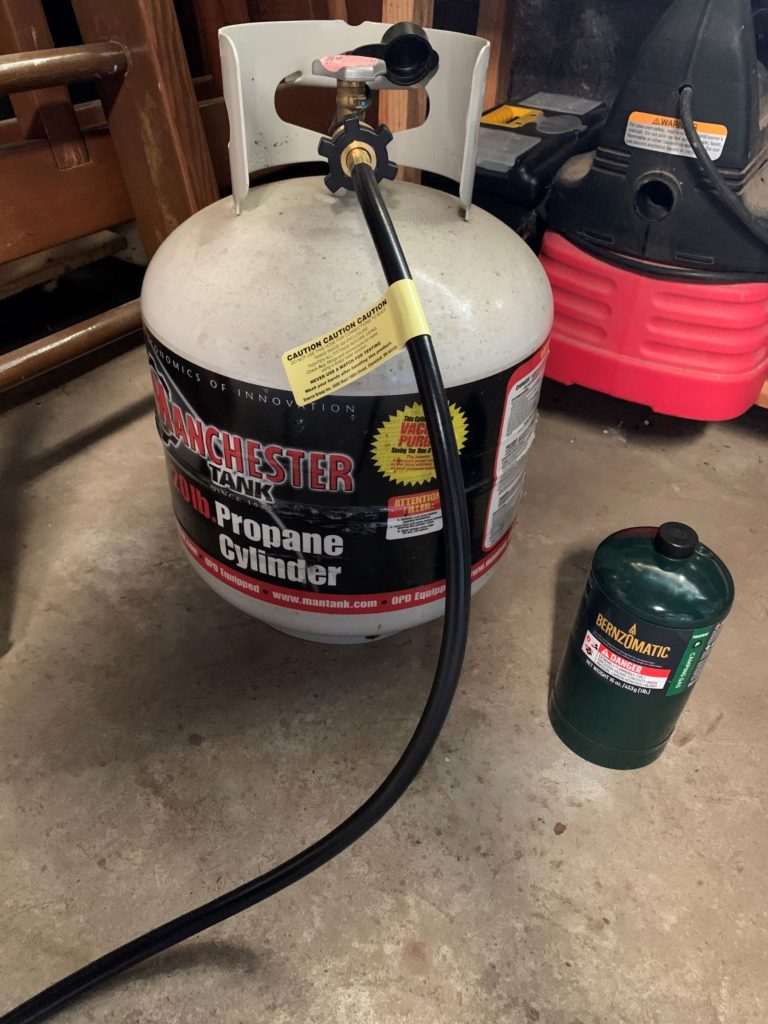Let us not confuse gases with gas. Fortunately, the options for gases are much simpler. The big boy is propane and natural gas, but there is occasionally butane too. Natural gas is unrefined hydrocarbons, mostly methane. Propane is often interchangeable with natural gas and sometimes liquid fuels as well (more on that later).

First a chemistry lesson. All forms of fuel are hydrocarbons. The smaller the hydrocarbon molecule, the more likely its native form is a gas at human survivable temperature and pressure. In terms of stack ranking size: methane < ethane < butane < propane < pentane (which is actually a liquid a room temperature).
What is also true is that the larger the molecule, the more BTU per storage unit. This means that you can estimate the BTU potential depending on volatility. This means by BTU rank: propane < gasoline < diesel
What I am getting on about is that liquid fuels have more potential energy. And to punctuate that, one gallon of liquid fuel will burn more efficiently or longer than one gallon of propane. The good news is that it is propane is widely available at most gas stations. Many other retail locations also use a cylinder exchange program. It is running quite a bit cheaper than liquid fuels and something like half the price of gasoline.
Natural gas is primarily methane, an even smaller hydrocarbon than propane. The very nice thing about natural gas is that it is piped to your home. It also has a very strong track record of working if the grid is down. Pretty much if the pipe isn’t severed, gas is flowing. Hydrogen sulfide is added to both propane and natural gas so that you can smell it leaking. They are however not the same molecule.
The thing that I am most excited about is that many liquid using appliances can be converted to run propane. This often times means some custom parts, but often significantly cheaper than a second piece of equipment. As an example, my camp stove just needs something called a generator and a pressure regulator and a twenty pound cylinder will be cooking away, literally. Gasoline generators can also use propane or natural gas. This requires a change in the carburetor only. This solves part of the redundancy equation by fuel flexibility.
I am not a fan of the one pound, disposable cylinders. These would typically be the dark green ones that are the size of a fat water bottle. I find them wasteful as most recyclers wont touch them with a ten foot pole unless they have been visually punctured. They often won’t suffice for a weekend camping either. What I can say is that they are ubiquitous (if not in shortage like during the pandemic). It seems like every convenience store and hardware store has them.
I have recently found that there is a way to refill the one pound canisters using some specialized equipment. They are a little speedy once but I have seen the the single use canisters going for $7 each. That means that the system pays for itself pretty quickly. It seems like it was out of stock for years but now seems to be in the supply chain again and is on my short list of purchases to be made.
There are a plethora of sizes that cylinders can be purchased. Twenty pounds is the common barbecue size but there are plenty of 5, 50 and larger sizes at a lot of box stores. The one thing that gripes me about propane cylinders is that they have a stamped date and regulations stat that cylinders are only re-fillable ten years from that date. I am going to talk about that on Monday.
I would be remised if I didn’t talk about safety. If you are burning something indoors, you need a carbon monoxide detector. This goes for liquids and gas appliances. Things like stoves and heaters are generally pretty good about proper combustion but don’t ever run a generator inside. I have a battery operated one that I use in my shop for the kerosene heater. I will bring it inside if I am burning something, including the fireplace. Also, when the power is out, when you will likely be doing these kinds of things, you can’t count on a plug in variety.
End Your Programming Routine: As Hank Hill used to say there is quite a bit to “propane and propane accessories”. Given some of the limitations of portable gas, I don’t use it as my primary fuel. That doesn’t mean I don’t have any. At the very least if you have a propane barbecue, I think you should have a second cylinder. One to use and one to swap or refill before you need it. You might find that it is the gateway to other redundancies instead of a headache when your one cylinder goes empty.

Recent Comments